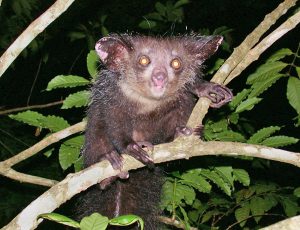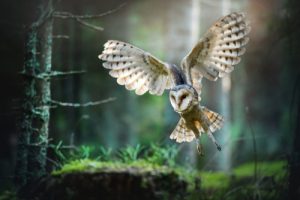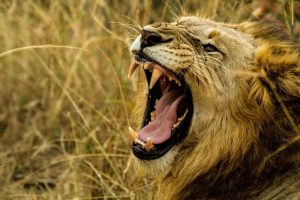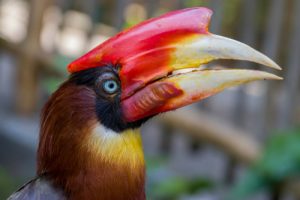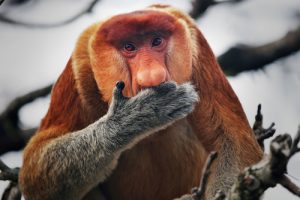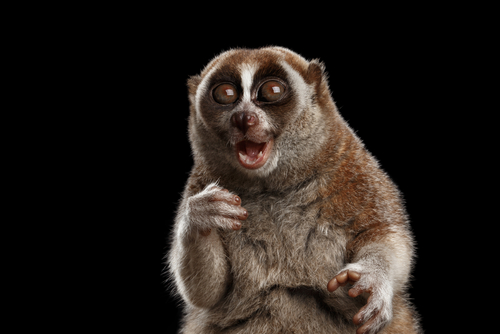
Mammals
Most of us know that mammals are vertebrate animals and could probably name several hundred. However, did you know there are some 6,400 extant species in the world, which are divided into 29 different orders. All mammals belong to the taxonomy class ‘Mammalia’ and small groups have adapted for life at sea, in the air, in trees, underground, or on two legs. However, the vast majority of mammals are quadrupeds whose physiology is suited to a life on terrafirma.
Here’s a brief narrative on five species of mammal that you might not know:
Addax
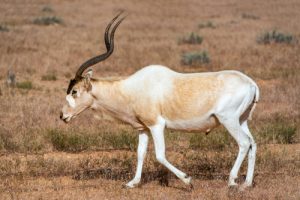
Photo credit: Jess Kraft/Shutterstock.com
The addax (Addax nasomaculatus) is a species of antelope that was once native to much of the Sahara Desert. Also known as the white antelope and the screwhorn antelope, the addax is the only member of the genus ‘Addax’. The species is sexually dimorphic, with males (100 – 135 kg) being an average of 20% heavier than females. The addax’s most notable feature is its long spiral horns, which can grow to well over a metre in length.
Since 2000, the addax has been classified by the International Union for Conservation of Nature (IUCN) as ‘critically endangered’. Unrestrained hunting has reduced the current wild population to less than 100 individuals. The surviving wild stock is scattered around some of the remotest desert areas of Mauritania, Niger, and Chad. However, there are also several hundred addaxes that exist in zoos and private parks. Additionally, there is a captive breeding programme that is helping to restore feral populations to Tunisia and Morocco. If it proves successful, it’s hoped the addax can be eventually reintroduced to much of its former range.
Binturong
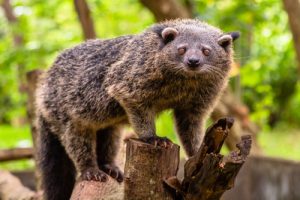
Photo credit: Vadim_N/Shutterstock.com
The binturong (Arctictis binturong) is an arboreal mammal, native to South and Southeast Asia. It is alternatively known as the bearcat, a name derived from its appearance. Described as having a catlike head and the body of a bear, it’s related to neither. In fact, the forest-dwelling omnivore belongs to the Viverridae family, along with the likes of the civet and fossa. The most striking feature of the binturong is its long bushy tail, which is almost as long as its body (70 – 90 cm). An adult weighs in at between 15 – 25 kg, with females generally being a little larger than males. The essentially nocturnal binturong spends most of its time high up in the forest canopy.
The binturong is listed by the IUCN as ‘vulnerable’ and as ‘critically endangered’ in China. The wild population is estimated to have fallen by more than 30% in the last 30 years. The main threats to the binturong come from the loss of habitat, hunting for its meat and pelt, and being taken for the illegal pet trade. While it is a protected species in India and Bangladesh, it has little safeguarding in the rest of its range. However, good genetic diversity in its relatively large global captive population has been a key factor in the success of breeding programs.
Tenkile
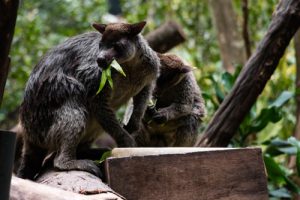
Photo credit: Ricca Novia/Shutterstock.com
The tenkile (Dendrolagus scottae) is a tree-dwelling marsupial, alternatively known as Scott’s tree kangaroo. Locally, it is also dubbed as the rengile, the teklel, or the tikisir. It has a very limited range which is some 125 sq. km of the Torricelli Mountains in Papua New Guinea. Its natural habitat is the tropical dry forest at elevations of between 900 -1700 m. The tenkile weighs in between 9 – 11 kg, with males being a little larger than females. While no in-depth study of the tenkile’s diet has been undertaken, it is thought to feed on vines, ferns and the leaves of various other forest plants.
Some 70 years ago, the tenkile was a common sight within its range and a valuable source of food for the local community. However, by 1996, experts estimated that there were as few as 100 tenkiles left in the wild. This made it one of the world’s most threatened species, classified as ‘critically endangered’ by the IUCN. Today, due to concentrated conservation efforts, the tenkile is no longer hunted. However, loss of habitat due to deforestation and illegal logging is now a significant extant threat to the species. Additionally, the tenkile is slow to reproduce giving birth to a maximum of one joey per year. Despite these challenges, today’s tenkile population has steadily climbed to over 300.
Kinkajou
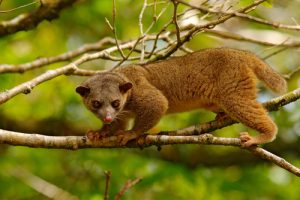
Photo credit: Ondrej Prosicky/Shutterstock.com
The kinkajou (Potos flavus) is an arboreal mammal native to Central America and parts of South America. It is alternatively known as the honey bear because of its propensity to raid bees’ nests. The kinkajou was once thought to be a species of lemur but is actually a member of the raccoon family (Procyonidae). It is the only member of the genus Potos. The adult kinkajou has a body length of up to 60 cm and a tail approaching the same length. It can weigh anything between 1.5 – 4.5 kg. It spends most of its life in the upper canopy of tropical rainforests and feeds mainly on fruit but also eats insects, eggs, nectar and honey.
The current greatest existential threat to the Kinkajou is the loss of habitat due to deforestation. While the species still has a relatively wide distribution, there is an ongoing steady decline in its population and range. However, it is also still widely hunted for its soft pelt and prized meat, as well as captured for the pet trade. The kinkajou is currently classified as of ‘least concern’ by the IUCN but a valid global estimate of its population size is yet to be made.
Saola
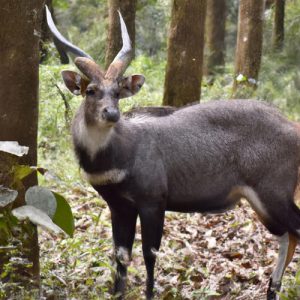
Photo credit: Bruyu/Shutterstock.com
The saola (Pseudoryx nghetinhensis) is a large species of mammal that is only found in the Annamite mountains of Vietnam and Laos. Though, the full extent of its range within that area is currently unknown. While the saola closely resembles an antelope it is in fact of bovine extraction. The engimatic forest dweller has distinctive white facial markings and sturdy, sharply-pointed horns. An adult saola has a maximum body length of 85 cm and weighs between 80-100kg. Nicknamed the Asian unicorn, the saola is a herbivore that feeds entirely on the leaves of trees and bushes.
With a trend towards a decreasing population, the saola is listed as ‘critically endangered’ by the IUCN. It is estimated that there is a maximum of 750 saolas currently in existence. However, some experts believe its numbers may be much less. The biggest threats to the soala are the fragmentation and loss of habitat, causing localised populations to become smaller and increasingly isolated. However, the saola is also a victim of illegal hunting, being prized for its fur, use in traditional medicine and meat.
Previous attempts to keep the saola in captivity have all resulted in the animal’s death within a few months. Thus, current plans to save the saola from extinction include expanding the existing forest reserves in the Annamite Mountains and reforestation of its former habitat.
Header image credit: Seregraff/Shutterstock.com

